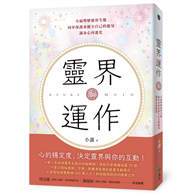"Taste, guts and money" are the founding pillars of an art dealer’s life. Regis Krampf has been following his passion from an early age and gradually built a collection following his taste and intuition. One of the artists most represented in his collection is Georges Braque. Although Krampf owns artworks outside the mentioned period and by other artists, this book is only about Georges Braque’s body of work made after cubism until his time of death in 1963.
Georges Braque was a genius of the 20th-century art scene. He pioneered the fauve movement and invented cubism with Picasso. The period this book focuses on is roughly situated between 1920 and 1960. After a near death experience on the battlefields of WWI, Braque focused on his techniques and inspirations away from affiliations or artist groups. Somehow, he was one of the first artists to kill the idea of an artistic movement following his scientific and artistic discoveries. Georges Braque was an artisan, following the hands-on approach of his father and grandfather who were house painters. The texture - the surfaces he created - echoed the intricacies found in nature’s own handiwork. He would often take his paintings on his usual, interminable bicycle rides and place them directly in nature to observe how they would hold against it. Braque is one of the innovators of Modern painting. The body of work in this important period has long been overlooked. Krampf aims to correct this mistake and give a broader understanding of his work.| FindBook |
有 1 項符合
Georges Braque’s Post-Cubism Masterpieces: The Règis Krampf Collection的圖書 |
 |
Georges Braque’s Post-Cubism Masterpieces: The Règis Krampf Collection 作者:Krampf 出版社:Anthem Press 出版日期:2024-11-05 語言:英文 規格:精裝 / 150頁 / 普通級/ 初版 |
| 圖書館借閱 |
| 國家圖書館 | 全國圖書書目資訊網 | 國立公共資訊圖書館 | 電子書服務平台 | MetaCat 跨館整合查詢 |
| 臺北市立圖書館 | 新北市立圖書館 | 基隆市公共圖書館 | 桃園市立圖書館 | 新竹縣公共圖書館 |
| 苗栗縣立圖書館 | 臺中市立圖書館 | 彰化縣公共圖書館 | 南投縣文化局 | 雲林縣公共圖書館 |
| 嘉義縣圖書館 | 臺南市立圖書館 | 高雄市立圖書館 | 屏東縣公共圖書館 | 宜蘭縣公共圖書館 |
| 花蓮縣文化局 | 臺東縣文化處 |
|
|
圖書介紹 - 資料來源:博客來 評分:
圖書名稱:Georges Braque’s Post-Cubism Masterpieces: The Règis Krampf Collection
|










